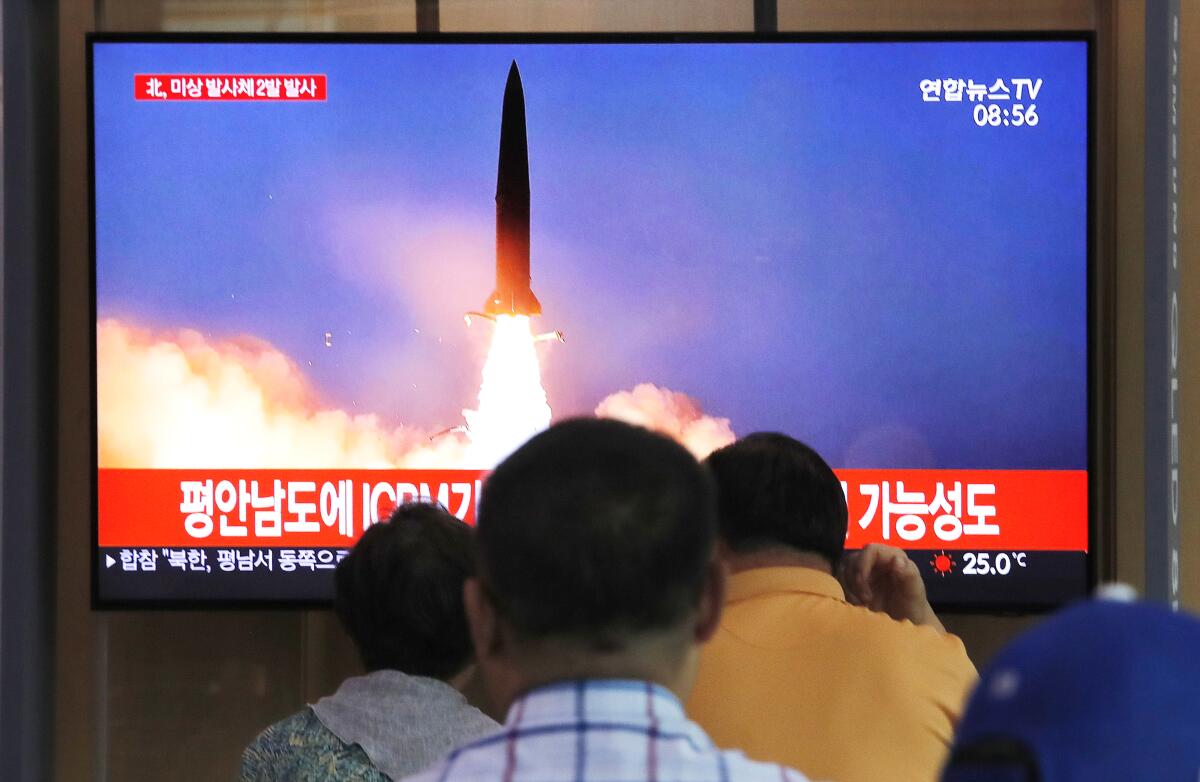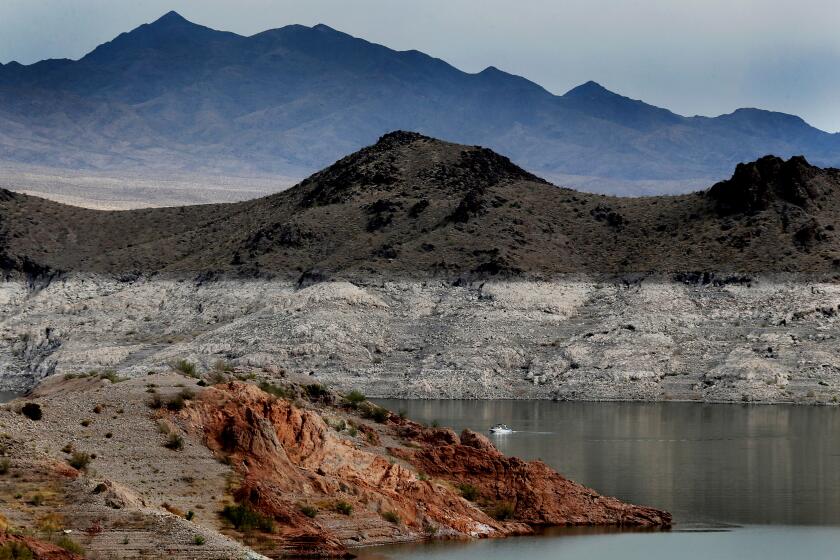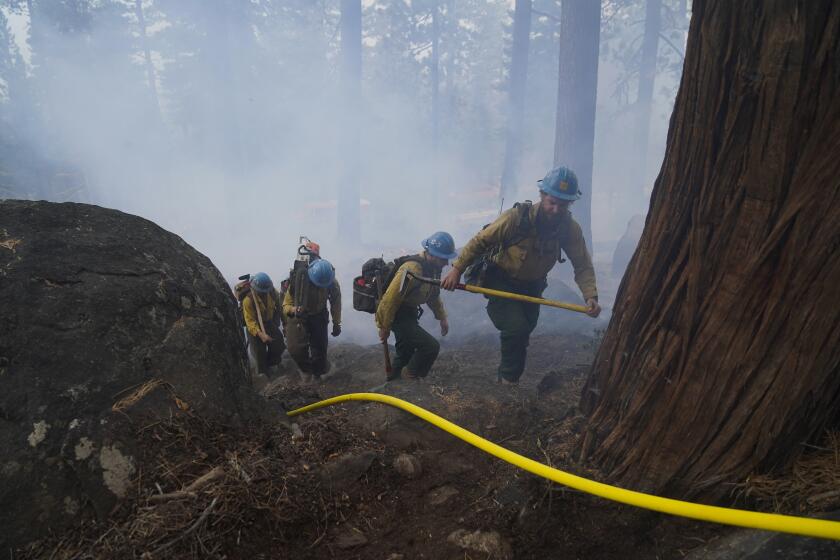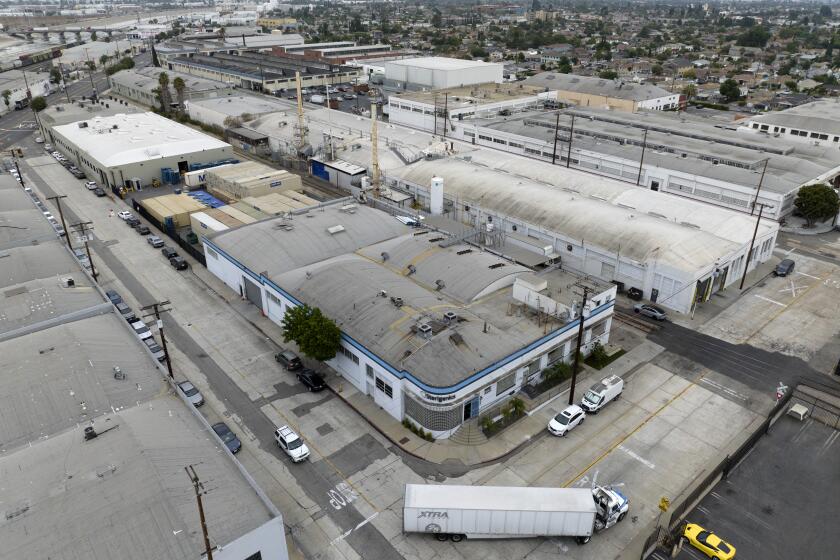Even a limited nuclear war could kill a third of world’s population, study shows

- Share via
As escalating tensions among the United States, Russia and China revive old fears of nuclear war, some researchers are warning that even a limited-scale exchange between such nations as India and Pakistan could have catastrophic consequences for global food supplies and trigger mass death worldwide.
A nuclear conflict involving less than 3% of the world’s stockpiles could kill a third of the world’s population within two years, according to a new international study led by scientists at Rutgers University. A larger nuclear conflict between Russia and the United States could kill three-fourths of the world’s population in the same timeframe, according to the research published Monday in Nature Food.
“It’s really a cautionary tale that any use of nuclear weapons could be a catastrophe for the world,” said climate scientist and study author Alan Robock, a distinguished professor in Rutgers’ Department of Environmental Sciences.
The findings come at a time when — 30 years after the end of the Cold War — the threat of a nuclear holocaust may be greater now than it ever was.
Recently, U.K. National Security Advisor Stephen Lovegrove argued that the breakdown in dialogue between nations, as well as the loss of safeguards that had been created between nuclear superpowers decades ago, has plunged the world into “a dangerous new age.” United Nations Secretary-General Antonio Guterres has also warned that “the prospect of nuclear conflict, once unthinkable, is now back within the realm of possibility.”
Recurring drought and rising temperatures have already begun to alter the landscape of California and the American Southwest, researchers warn.
Although Robock and others have previously projected that nuclear war would result in tremendous disruption to the climate and food supplies, the recent study marks the first time that researchers have calculated the potential extent of the famine that would result and how many people would die.
The detonation of even just a small fraction of the world’s nuclear weapons would spark massive firestorms that would rapidly inject sun-blocking soot into the atmosphere, touching off a sudden cooling of the climate, the researchers theorized.
Researchers used climate models to calculate how much smoke would reach the stratosphere — where no precipitation occurs to wash it away — and how this would change temperature, precipitation and sunlight. Then they calculated how these changes would affect the production of various crops, as well as how fish would respond to changes in the ocean.
As a result, they projected that tens of millions of immediate fatalities in the war zone would be followed by hundreds of millions of starvation deaths around the globe.
That’s without taking into account the effects of increased ultraviolet radiation on crops due to the destruction of the ozone layer caused by the heating of the stratosphere, Robock said. Such an effect, which researchers hope to quantify in future studies, would likely worsen the results, he said.
“In my opinion, our work is an existential threat to nuclear weapons — it shows you can’t use nuclear weapons,” Robock said. “If you use them, you’re like a suicide bomber. You’re trying to attack somebody else but you’ll die of starvation.”
The data is being released on the heels of a growing consensus among experts that the threat of nuclear war is greater than it’s ever been, said Ira Helfand, immediate past president of International Physicians for the Prevention of Nuclear War.
“The general public needs to understand the enormity of the danger we face, the immediacy of the threat and the urgency of eliminating these weapons before they eliminate us,” he said.
A federal firefighter’s viral resignation letter is highlighting the job’s low pay and harsh working conditions in the age of climate change.
Most of the scenarios the researchers considered involved a hypothetical nuclear conflict between India and Pakistan, which they believe is the most likely region where such a conflict could erupt, Robock said. The two countries have fought in four wars and still have frequent border skirmishes.
If India and Pakistan were to each target urban centers in the opposing country with 250 100-kiloton nuclear weapons, which they are believed to possess, about 127 million people in South Asia would be killed by explosions, fires and radiation, the study found. An estimated 37 million metric tons of soot would be injected into the atmosphere, sending temperatures across the planet plunging by more than 5 degrees Celsius, a range last experienced during the Ice Age, according to earlier research by Robock and others. Food production would consequently collapse, with the number of calories available from major crops and fisheries falling by up to 42% and the resulting famine killing over 2 billion people worldwide, according to the most recent study.
In the event of a larger war between the U.S. and Russia, which together are believed to hold more than 90% of the world’s nuclear stockpile, an estimated 5 billion out of 6.7 billion people worldwide would die, according to the research.
But any of the nine nuclear-armed nations, which also include China, North Korea, France, Israel and the United Kingdom, have enough firepower at their fingertips to cause immense worldwide suffering and death, with soot rising into the sky and touching off a domino effect of catastrophic cooling and famine, the study suggests.
Although it’s not possible to test the theory directly, there are real-world analogues, Robock said. Massive wildfires in British Columbia in 2017 and in Australia in 2019 and 2020 pumped smoke into the stratosphere, a finding confirmed by satellite observations. The sun then heated the smoke particles, lofting them five to 15 miles farther into the atmosphere, he said.
“By lofting them up higher, it increases their lifetime and they get blown around the world before they fall out,” Robock said. “It’s the same process we modeled in our nuclear winter simulation with a lot more smoke.”
Ethylene oxide is a colorless and odorless gas that is used to sterilize medical equipment. It’s also a known carcinogen.
The researchers’ modeling was able to predict the effects of these fires, giving them more confidence the models would also be accurate when it came to predicting the effects of nuclear detonation, he said.
Edward Geist, a policy researcher at Rand Corp., said that the relatively recent discovery that wildfires can loft smoke into the stratosphere bolsters the researchers’ theory. They are doing the world a service by drawing attention to nuclear war’s potential effects, he said.
Still, there is a debate about the extent to which solar lofting would occur with nuclear detonation, Geist said. Although it’s certainly possible it would occur in a city attacked by nuclear weapons, that doesn’t necessarily mean it would happen simultaneously in every city that is attacked, as the paper assumed, he said.
“The big question is, you have a nuclear war of a certain size, how much of this smoke ends up in the upper atmosphere?” Geist said. “You can make a plausible case for both — very little will end up there, all the way out to, we’ve got to assume it basically all ends up there, which is what [these] sorts of papers do.”
He pointed out that a 2018 paper by researchers at Los Alamos National Laboratory also modeled a hypothetical conflict between India and Pakistan and concluded that previous research by Robock and others had overestimated how much soot would be produced, how high the smoke would reach and how dramatically the climate would change as a result.
Robock, however, disputes those findings. The Los Alamos researchers chose an area of suburban Atlanta to represent a dense city in India or Pakistan and failed to include in their modeling atmospheric processes such as cloud formation that would carry air upward, he argued. Robock said they also assumed winds that blew too strong and ran their simulation for too short a time.
“They had a number of assumptions, all of which made the effects much less,” he said.
A 2020 paper by researchers at Lawrence Livermore National Laboratory also considered the India-Pakistan scenario and concluded there were uncertainties. Although the team projected that an exchange of 100 15-kiloton nuclear weapons would cool the climate if densely populated urban areas were to ignite, they projected there would be little to no effect on the climate if fires were limited to suburban areas.
In contrast, the Rutgers-led study assumes that the countries would target each others’ cities, where fuel concentrations are densest and the climatological effects would be most dramatic, Geist said. But Pakistan has said that if it were to use nuclear weapons against India, it would use tactical nuclear weapons to stop a conventional invasion, not to attack cities wholesale, he said.
“It really comes down to how much stuff do you burn, how much of it ends up being smoke and how much of that smoke ends up in the upper atmosphere, and how much real plausibles for nuclear wars translate into that,” Geist said. “We really don’t know, and hopefully we don’t find out.”
Although there’s a popular notion that nuclear weapons will never be used because they are so powerful that their destructiveness is a deterrent, that’s wishful thinking, Helfand said. That they have not yet been deployed is simply a matter of chance.
“We do know what’s going to happen if these weapons stay around,” he said. “Sooner or later our luck is going to run out.”
More to Read
Sign up for Essential California
The most important California stories and recommendations in your inbox every morning.
You may occasionally receive promotional content from the Los Angeles Times.














